African tailors empowerment: an approach on co-learning
1
During a fieldwork season in Maputo (Mozambique), from April to May 2011, I (the first author) observed that tailors are important agents on clothing “creativity practices” (Grabski, 2009) of local fashion. Often they work outside the house (at the terrace or marquise) or in the municipal markets – in this latter case grouped at a specific area of the market (see Fig. 1).
I had the opportunity to work with some of the West African migrant tailors, at Janette’ marke and during a workshop (Figure 2) that I organized for some Mozambican stylists.
From that experience I observed that Mozambican tailors, as many African ones, have an important role on clothing production, from the traditional style to the contemporary one, when they answer stylist2 or clients demands.
Endowed with a cosmopolitan view, African tailors are narrators and readers between the ‘fringed’ Western aesthetics and the ‘corset’ of the tradition that sustains the necessity of cultural belonging.
From informal conversation held with customers and tailors, I understood that many local tailors live at the edge of poverty and the emigration - including to Europe - may answer the wish for a formal education and better working conditions. This is the path that many African tailors follow.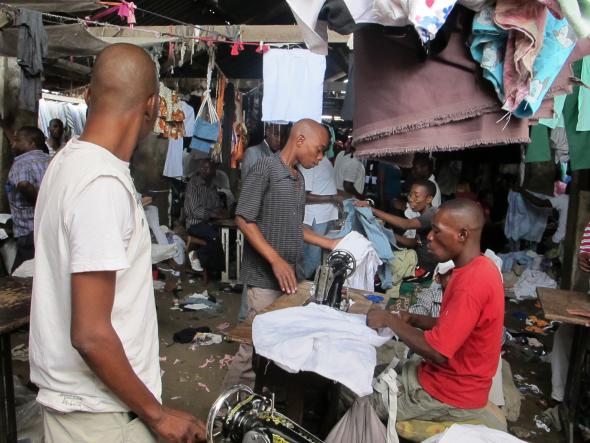 Fig. 1 – African tailors working at Xipamanine’s market.
Fig. 1 – African tailors working at Xipamanine’s market.
Regarding Lisbon, we find a city with a vibrant African community (African Lisbon), and from this interlaced cultural web many African tailors have established their ateliers at the surrounding areas of Rossio and the city peripheries. They import African models of sewing conditions and they work in and for the African community. Most of them live in poor conditions, almost at poverty level, without access to school, knowledge development, surviving at the margins of Portuguese society.
This project is part of a PHD research aiming both to apply, at an academic level, the identity, tradition and fashion-able3 challenges of African capulana textile into the XXI century fashion and, in parallel, to contribute in a practical way to the improvement of a more equal society through sustainable fashion design, seen as a vehicle for social changings and knowledge empower. Here African tailors are considered agents for the operational creativity of local fashion with this African textile (or sui generis), and therefore agents to develop mechanism between tradition and modernity.
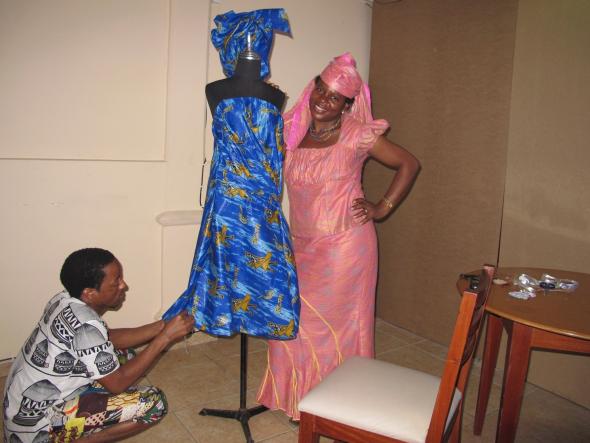 Fig. 2 – During the workshop developed by the author in Maputo, the tailor was working with the stylist on the draping technique.
Fig. 2 – During the workshop developed by the author in Maputo, the tailor was working with the stylist on the draping technique.
Tailoring cloths, tailoring other modernities
To be a tailor in Africa means to preserve a traditional know- how where experience and creativity meet together to create a unique garment, amplifying an intimate connection with oral tradition. “Speaking”, “seeing” and “listening” are essential elements of the chain of knowledge transmission. From the master to the disciple, knowledge is transferred together with the details that the stitches bring together. Usually there is no formal education, but rater knowledge that is transferred based on ‘lived’ experiences. Facing apprenticeship, African tailors start training at the age of boyhood and “apprenticeship happens as a way of, and in the course of, daily life” (Lave, 1991:70). From master to disciple, the traditional knowledge is the hinge to preserve cultural knowledge on tailoring. Aesthetics par excellence, these artisans mainly use West African clothing heritage to guide their ‘new’ creative work. On the other hand they work with second-hand clothing and become responsible for the deconstruction, customization and rearrangement of Western ‘mimesis’. This contact with Western clothing style developed a ‘new’ conceptualization of African aesthetics. Therefore, tailors become able to outline a ‘new garment’ by using knowledge shaped by oral tradition and western aesthetics.
Capable of conceiving/forging the world-to-come, tailors are important social agents in the integral development of African society aesthetics and economy (many of them develop a small-scale enterprise). The produced clothes enable the user of being “capable to build a rapport and of seeking a regenerative dialogue about their own uniqueness” (Erner, 2004:183) and they are a cultural expression based on the articulated and participative beliefs, dreams and meanings of a personal narrative that reveals the “ ’post’ domestication” (Hall et al., 1997:240), inside multiple identities and not a only a “new modern cultural identity”(Craik, 1994: 27).
Methodology
In order to develop knowledge and skills among those African tailors, with their apprenticeship experience as the basis, the author developed a co-learning program at and with support of the Fashion Institute Modatex - a vocational training center of the textile industry located in Lisbon, Benfica. Modatex is interested in this program, because of its perspective of a social approach in knowledge sharing with African people, who have such a strong cultural background. To promote better financial conditions to the tailors, the school tried all efforts to get a scholarship to help them to come to school. In February 2012, the tailors received a small subsidy that covers the costs of public transport (4.25 euros per day).
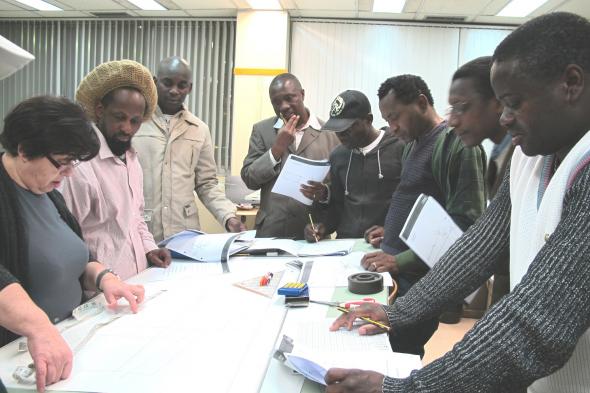 Fig. 3 – The teacher and the group of tailors working on an exercise.
Fig. 3 – The teacher and the group of tailors working on an exercise.
Participants
At this first course eight tailors, mainly immigrants from West Africa, each of them living with an average income of 300 euros per month: 5 from Guinea Bissau, 1 from Serra Leona, 1 from Gambia and 1 from Guinea Conakry. Their age ranges from 28 till 41. Most they speak and understand Portuguese language. Some of them developed a job as tailor and make a living out of that. Others have other jobs and work only as tailors during their spare time. All of them are registered as tailors on their passport document but most are facing difficulties on getting papers to stay legal on the country.
The course
The aim of the course was to develop a first educational platform at a fashion institute, where it will develop an educational program on pattern cutting that ‘fits’ the cultural background of the immigrant African tailors. We intended to develop a process that comes to them in other to let them come to us and let them express a “fusion of intellect and emotion” (Smith and Williams, 1999: 57). Based on a co-learning process, all the proposed exercises on this phase obey this aim.
During the process situated approaches and exercises were proposed to the tailors, so that they could collaborate with each other (see fig 3) and with the researcher towards some shared understanding. The main objective of these proposed exercises was to cultivate close cultural dialogue and learning.
As a teaching/learning method we - partly - adopted a constructivist approach in which co-learning plays a dominant role. This approach, originally based on Vigotsky’s work (1962), argues that the responsibility of learning should reside increasingly with the learner. Social constructivism thus emphasizes the importance of the learner being actively involved in the learning process.
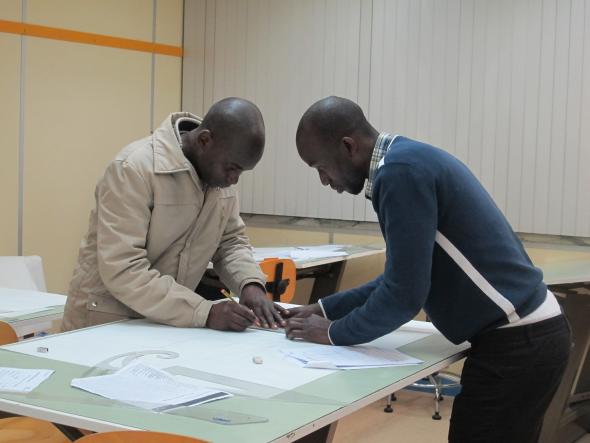 Fig. 5 - Tailors sharing knowledge without the teacher's interference.
Fig. 5 - Tailors sharing knowledge without the teacher's interference.
Regarding the content a program was developed running in different phases and accordingm to the tailors knowledge needs.
During the first 3 months the teacher, introduced the following course elements: in the first phase she introduced basic pattern cutting for skirt, trouser and body basis. In the second phase she introduced clothing patterns, to answer tailors’ drawings proposals (see figure 5).
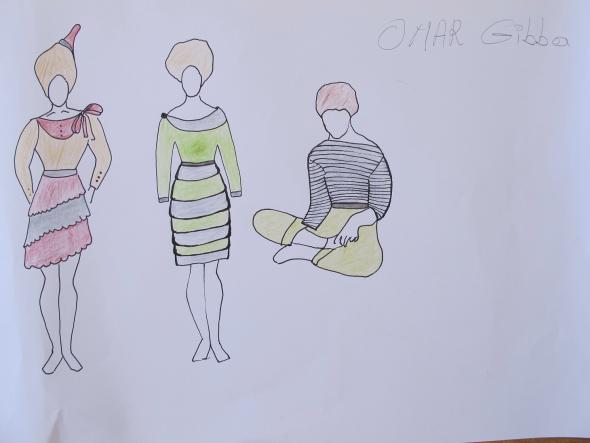 Fig. 5 - A drawing from one of the tailors.
Fig. 5 - A drawing from one of the tailors.
As a facilitator of knowledge, the researcher participated in most of the sessions, promoting discussions based mainly on cultural aspects on dressing and processes of making pattern cutting. These forum dialogues are important to share experiences, a key to the main goal of the project: co-learning and production of shared knowledge.
The course, that is still running, follows a twice-a-week schedule, from 6.30pm until 9.30pm. Over the first semester of 2012, the classroom became an observatory lab where qualitative methods were applied.
The research methods used in the different phases are described below.
Data collection and data analysis
Participant observation, including natural conversations during the time class, checklists on their work while they are working on the exercises that the teacher gives them (figure 3), and unobtrusive methods. These later refer to note taking about some interesting talks and observations express by the tailors, observing and analyzing their posture, their concentration and development, taking some pictures and audiotaping some sessions.
We also proposed to each tailor to keep a diary in order to record the main elements of the fieldwork. The objective is to let them register and share some personal notes, drawings, stories, doubts and suggestions for the program. At first these documents were meant for the researcher, but we did intend to share them with the tailors as together develop more knowledge and results.
Finally, informal/unstructured interviews were carried out in order to learn about the tailors’ apprenticeship process that they had gone through in Africa and to let them tell personal stories about the work as tailor before and after emigration to Europe. Some classroom discussions were audiotaped for data analysis.
This multitude of data sets allows a better understanding of the learning process and insight (weakness and strengths) into the developing program.
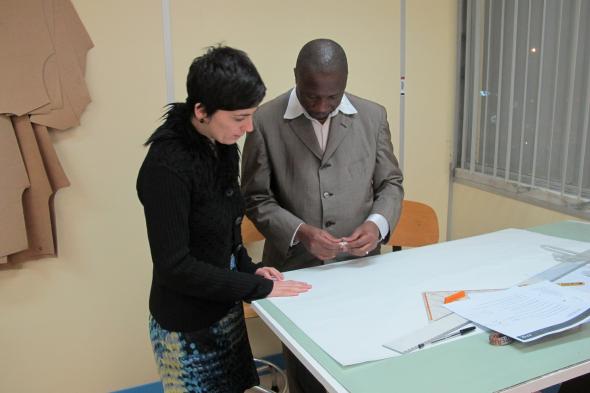 Fig.6 - Hands at work.
Fig.6 - Hands at work.
Results
The results hitherto are based on participant observation and informal interviews. The method of keeping a field diary did not work as it should do, because most of the tailors have writing problems as a consequence of originating from oral traditions and of lack of schooling.
In analysing the results we are aware of the fact that the observer is European with a European perspective/view. In that way the results might be biased. Nonetheless, by living for two months in Mozambique among local people and working with the tailors in Lisbon she experienced their culture and tried to understand them accordingly.
The majority of the tailors came to the course very motivated, but simultaneously with a shy and defensive attitude. Gradually they started to change this attitude: openly discussing their ideas with ‘foreigners’, as the teacher and the researcher were seen.
This process was for them a means of developing an affirmative posture and trust. Gradually they felt more comfortable and freer to engage in horizontal dialogues while sharing their knowledge, behaviors, opinions and issues.
Because most of them don’t have a strong hold over Portuguese language, some steps of learning were carefully repeated. Gradually they started to master technical words and to apply them naturally in current work at the class. The capacity of overstepping language barriers resulted in a more open, fun and positive learning environment.
This tailors’ group turned out to be very talented in terms of knowledge and skills. ‘Obsessed’ by clothing, they expressed a strong sense of visual memory. However, during drawing exercises tailors showed a deficit of drawing skills, particularly in proportion and ratio, a key element in Western clothing design. Arithmetic issues were on the basis of this deficit in applying basic formulas of developing modeling patterns.
After this was discovered, the teacher proposed easier ways to develop the exercises by giving the tailors the final solutions. Some of them showed their own methods of taking measures, often using calculations by folding the fabric (or the paper). With time and practice they ‘got used’ to technical materials to work on modeling (specific modeling rules, measuring instruments, etc.), such as using tape measure (which is their common instrument for measuring).
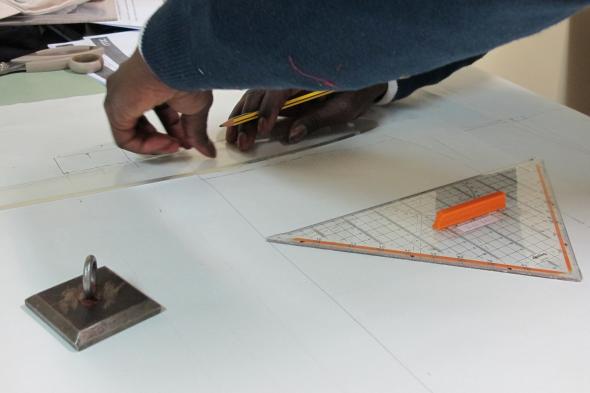 Fig.7 - A tailor finding his ways with the typical tailor's drawing and cutting tools.
Fig.7 - A tailor finding his ways with the typical tailor's drawing and cutting tools.
Based on the analysis through observations, results of exercises and informal interviews by the author it became clear what other skills, next to the technical ones, were important to develop. During 12 sessions the researcher shared with them exercises based on colors, textile, emotions and technical drawings. It was observed that their African cultural and aesthetics background was very present in their work. Predominantly they chose vibrant colors. African textiles were a constant choice in all creative outfit proposals. In drawing clothing they were given a body base for fashion sketches by the researcher, but they (re)drew it into an ‘African body’ accentuated by the hairstyle (see Figure 5).
Due to the rigorous pattern cutting delineation and cleanness of the sheet, they gradually became more effective on that need. Some became able to apply some ‘new’ techniques in tailoring daily life, and became able to develop a ‘third’ knowledge ‘mixing ‘their’ technique with the ‘new’ one learned at the school.
Concerning emigration issues, the tailors achieved a better social opportunity. A contract between them and the school resulted in a paper that is absolutely necessary to facilitate the emigration process and access to legal documents in order to stay on the country. The subsidy for transport allows them to come regularly to the school.
Conclusions and discussion
The course has positive results addressing knowledge empowerment and transfer, between all participants, and development of human relations based on trust. Data analysis revealed that this co-learning is helping the growing of a positive and constructive dialogue between the tailors and the ‘foreigners’ society.
Capulana concepts are the main theme of the whole research project taken care of by the researcher. Here the tailors are important agents on capulana traditional knowledge transfer and contemporary aesthetic results. As artisans, they are able to preserve a cultural patrimony expressed by their work. But also to make the proper ‘fit measure’ for the cosmopolitan African body that emerged from the dialectics between tradition and modernity.
Reflection
The results of these observations are preliminary because the project is ongoing. We are aware of the subjectivity of our qualitative data, which is partly due to bias in the results because of cultural differences and the tendency of a Eurocentric position about knowledge. To validate the results and conclusions found we will share them with the tailors in order to include their opinions and evaluations.
The findings are also interesting for the education of Portuguese fashion students, when on another level of the research project we proceed with the combination of both groups, African tailors and first year students of the Faculty of Architecture of Lisbon, in order to promote a cross-cultural co-learning program.
Finally, we will develop a model for creating a platform for African tailors that, as an official practice, will gain a foothold in some fashion institutes and also in the local communities in Africa.
Acknowledgments
For the support of this research, I thank the FCT (Foundation of Science and technology), Lisbon. My heartfelt thanks to Henry Christiaans (my supervisor) and Paula Meneses (my co-supervisor) for them critical readings and important contributes along writing steps of this paper. I especially thank to the to Modatex team and tailors for the cooperation on this program.
References
CRAICK, J. (1994) The face of Fashion: Cultural Studies in Fashion. London and New York: Routledge.
ERNER, G. (2004) Vitimas de la moda, como se crea, por qué la seguimos. Paris: GGmoda.GRABSKI, J.(2009) Making fashion in the city: A case study of tailors and designers in Dakar, Senegal. Fashion Theory. Volume 13. Issue 2, p. 215-242.
HALL, S. (1997) Representation: Cultural Representations and signifying Practices. California: Sage Publications.
REED, H.J. and LAVE, J. (1979) Arithmetic as a Tool for Investigating Relations between Culture and Cognition. Interdisciplinary Anthropology, 6 (3), 568-582.
LAVE, J. (1991) Situating learning in communities of practice. In L. Resnick, J. Levine, and S. Teasley (Eds.), Perspectives on socially shared cognition. Washington, DC: APA. p. 63-82.
MATTHEWS, W.J. (2003) Constructivism in the Classroom: Epistemology, History, and Empirical Evidence. Teacher Education Quarterly, 30 (3), 51-64.
SMITH, G. and WILIAMS, D. (eds) (1999) Ecological Education in Action. Albany: State University of New York Press.
VYGOTSKY, L. (1962). Thought and language. Cambridge, MA: MIT Press.
- 1. This paper aims to present and discuss an ongoing study focused on a co-learning approach, based on pattern cutting, developed by the author, at the Fashion Institute Modatex. The subject is based on knowledge and skill development while answering several needs of a selected group of African immigrant tailors in Lisbon. By creating a first co-learning platform it became possible to enable cognitive awareness through cross-knowledge sharing and to discuss academic and apprenticeship learning systems. The methodological approach favors a qualitative study with an emphasis on the observation of the process where culture works as mediation for space and dialogue. On another level of this study, participatory action research methodology is applied to better answer community problems, building collaborative learning and acquires higher cognitive and practical results. This practical application should result into knowledge empowerment and better integration of the tailors’ abilities, as well as a sustainable tangible manifestation of an intangible cultural heritage.
- 2. It is important to consider that most Mozambican stylists have not followed any formal fashion course, and most don’t know how to model and/or sew. In this scenario of fashion production the tailors’ autodidactic knowledge and experience is the main force to get fashion results.
- 3. Fashion-able practices are supported and based upon the conceptual developments done by the author about the Mozambican capulana.